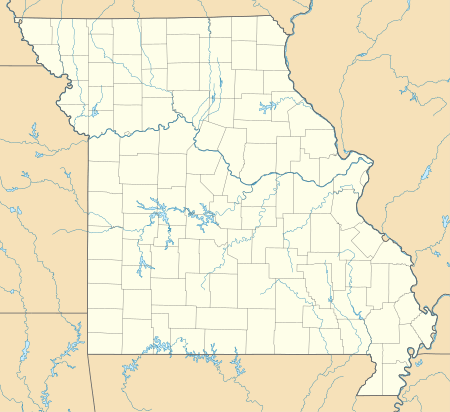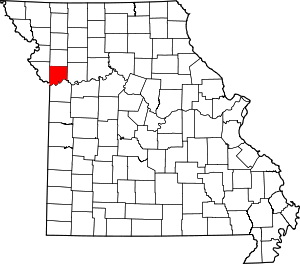Paradise, Missouri
Paradise is an unincorporated community in northwest Clay County, in the U.S. state of Missouri.[1] The community lies between the two arms of the Smithville Lake on the Little Platte River. The city of Smithville lies across the lake to the southwest. The community is located along Missouri Route W about four miles southeast of Trimble in adjacent Clinton County.[2]
Paradise, Missouri | |
|---|---|
unincorporated community | |
 Paradise  Paradise | |
| Coordinates: 39°25′39″N 94°30′57″W | |
| Country | United States |
| State | Missouri |
| Clay | Clay |
| Elevation | 925 ft (282 m) |
| Time zone | UTC-6 (Central (CST)) |
| • Summer (DST) | UTC-5 (CST) |
| GNIS feature ID | 730173[1] |
History
In 1832, the US Government deeded 40 acres (16 ha) of land at this location to Mr. Pleasant Gentry. The land was sold in 1850 to John Gosney, who surveyed the land. The developing town was named "Gosneyville". Gosneyville was renamed "Paradise" circa 1884.[1]
A post office called Paradise was established in 1858, and remained in operation until 1907.[3] The community was so named for the many churches in town relative to its small size.[4]
In popular culture
Paradise was featured in the 1998 film The Dentist 2. In the film the titular dentist, Doctor Alan Feinstone, travels to Paradise after escaping the psychiatric hospital he was being held in after the events of the first film.[5]
References
- U.S. Geological Survey Geographic Names Information System: Paradise
- Missouri Atlas & Gazetteer, DeLorme, First edition, 1998, p.27, ISBN 0899332242
- "Post Offices". Jim Forte Postal History. Retrieved 21 September 2016.
- "Clay County Place Names, 1928–1945 (archived)". The State Historical Society of Missouri. Archived from the original on 24 June 2016. Retrieved 21 September 2016.CS1 maint: BOT: original-url status unknown (link)
- Towlson, Jon (March 13, 2014). Subversive Horror Cinema: Countercultural Messages of Films from Frankenstein to the Present. McFarland. p. 195. ISBN 1476615330. Retrieved 1 November 2019.
